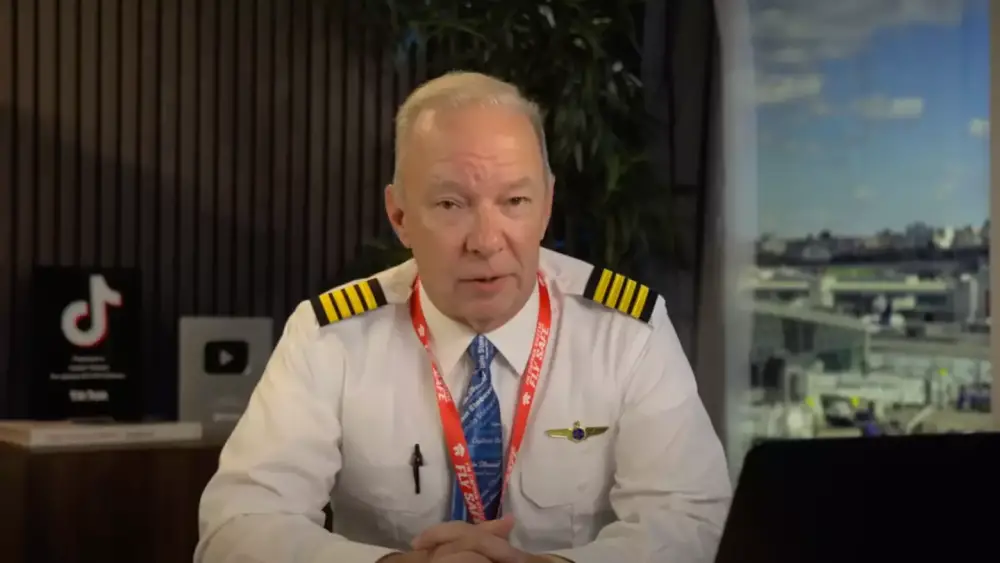When commercial aircraft encounter emergencies during the most vulnerable phases of flight, the consequences can be catastrophic. Recent discussions in aviation circles have highlighted how seemingly simple procedural errors can lead to devastating outcomes, reminding us why commercial aviation maintains such rigorous training protocols and safety standards. Understanding these critical moments not only provides insight into how modern aircraft operate but also reveals the complex human factors that can influence flight safety.
The Anatomy of Aircraft Takeoff: A Complex Dance of Engineering and Human Skill
Commercial aviation represents one of humanity’s greatest technological achievements, with modern aircraft incorporating decades of engineering refinement and safety innovations. During takeoff, pilots must coordinate multiple systems simultaneously while monitoring dozens of parameters that determine whether the aircraft will successfully transition from ground operations to sustained flight.
The takeoff phase begins long before the aircraft starts rolling down the runway. Pilots conduct extensive pre-flight checks, calculate weight and balance parameters, determine optimal flap settings, and establish communication protocols with air traffic control. These preparations are critical because takeoff represents the most power-intensive and technically demanding phase of flight, requiring precise coordination between crew members and flawless execution of well-rehearsed procedures.
Modern commercial aircraft like the Boeing 787 Dreamliner incorporate sophisticated fly-by-wire systems, advanced avionics, and multiple redundant safety mechanisms designed to prevent human error from compromising flight safety. However, these technological safeguards cannot eliminate the fundamental importance of proper crew resource management and adherence to established operational procedures.
Understanding Flap Configuration: The Invisible Factor in Flight Safety
Aircraft flaps represent one of the most critical systems affecting takeoff performance, yet they remain largely invisible to passengers and poorly understood by the general public. These moveable surfaces along the wing’s trailing edge dramatically alter the aircraft’s aerodynamic characteristics, providing the additional lift necessary for safe takeoff at relatively low speeds.
During normal takeoff procedures, flaps are extended to a predetermined setting that varies based on aircraft weight, runway length, weather conditions, and other operational factors. This configuration allows the aircraft to generate sufficient lift at takeoff speeds while maintaining adequate control authority for the pilots. The flap setting directly influences the aircraft’s minimum flying speed, climb performance, and overall flight characteristics during the critical initial phases of flight.
When flaps are improperly configured or inadvertently retracted during takeoff, the aircraft’s lift characteristics change dramatically. Without proper flap extension, the aircraft requires significantly higher speeds to generate equivalent lift, potentially exceeding the available runway length or creating a situation where the aircraft cannot maintain sustained flight after leaving the ground.
Aviation experts emphasize that flap-related incidents, while relatively rare, have historically contributed to several significant accidents throughout commercial aviation history. The Boeing 787’s advanced warning systems include multiple alerts designed to prevent takeoff with improper flap configuration, but these technological safeguards depend on proper crew response and situational awareness.
Cockpit Resource Management: The Human Element in Aviation Safety
Modern commercial aviation places tremendous emphasis on crew resource management (CRM), recognizing that most aviation accidents result from human factors rather than mechanical failures. CRM training focuses on communication, decision-making, workload distribution, and error management within the cockpit environment.
During critical phases like takeoff, pilots follow standardized callout procedures designed to ensure both crew members remain aware of the aircraft’s configuration and status. These verbal confirmations serve as a crucial safety net, allowing the non-flying pilot to monitor and verify that all systems are properly configured before and during takeoff.
However, high-stress situations can sometimes lead to miscommunication or procedural deviations. Aviation psychologists have extensively studied how workload, time pressure, and unexpected situations can affect pilot performance and decision-making. The design of modern cockpits attempts to minimize these human factor risks through standardized switch placement, clear labeling, and logical system organization.
Training programs for commercial pilots include extensive simulator sessions specifically designed to practice emergency procedures and develop muscle memory for critical actions. These training requirements are continuously updated based on lessons learned from incident investigations and advances in aviation psychology research.
The Physics of Flight: What Happens When Things Go Wrong
Understanding why aircraft crash requires examining the fundamental physics governing flight. Aircraft achieve lift through the differential pressure created as air flows over and under the wing surfaces. This lift must exceed the aircraft’s weight for sustained flight, with additional margin required for climbing performance.
During takeoff, pilots must achieve a delicate balance between airspeed, angle of attack, and power settings to ensure the aircraft can safely transition from ground effect to sustained climb. Ground effect, the increased lift experienced when flying close to the runway surface, can sometimes mask underlying performance problems until the aircraft climbs above this beneficial zone.
When critical systems like flaps are improperly configured, the aircraft’s performance margins become critically reduced. Modern aircraft are designed with significant safety margins under normal operating conditions, but these margins can be quickly eroded when multiple factors combine unfavorably.
The investigation process following aviation accidents involves detailed analysis of flight data recorders, cockpit voice recordings, wreckage examination, and human factors assessment. This comprehensive approach helps investigators understand not just what happened, but why it happened and how similar occurrences might be prevented in the future.
.jpg)
Captain Steve has discussed what he believed happened amid the tragedy (YouTube/Captain Steeeve)
Emergency Procedures and Pilot Training
Commercial airline pilots undergo some of the most rigorous training requirements of any profession, with initial certification requiring hundreds of flight hours and extensive ground school instruction. Recurrent training programs ensure pilots maintain proficiency in emergency procedures and stay current with evolving operational requirements.
Emergency situations during takeoff present unique challenges because pilots have limited time and altitude to diagnose problems and implement corrective actions. Training scenarios include engine failures, system malfunctions, and various configuration errors that might occur during this critical phase of flight.
Simulator training allows pilots to practice these emergency scenarios repeatedly without risk, developing the rapid decision-making skills necessary to handle real emergencies effectively. Modern flight simulators can replicate virtually any conceivable emergency situation, providing invaluable experience that would be impossible to obtain safely in actual aircraft.
The aviation industry’s commitment to continuous improvement means that training programs are constantly evolving based on new research, technological advances, and lessons learned from both incidents and near-miss events reported through voluntary safety reporting systems.
Technological Safeguards and System Redundancy
Modern commercial aircraft incorporate multiple layers of technological protection designed to prevent accidents and mitigate the consequences of system failures or human errors. These systems include automated warnings for improper configuration, flight envelope protection, and multiple backup systems for critical functions.
The Boeing 787, like other modern aircraft, features sophisticated alerting systems that warn pilots of potentially dangerous configurations before takeoff. These systems monitor flap position, engine parameters, flight control settings, and numerous other factors that could affect flight safety.
However, aviation safety experts emphasize that technology cannot replace proper training, adherence to procedures, and effective crew resource management. The most advanced aircraft systems are only as effective as the humans operating them, which is why the aviation industry maintains such rigorous training and certification standards.
System redundancy means that critical functions typically have multiple backup systems available if primary systems fail. This redundancy extends to flight controls, navigation systems, power sources, and communication equipment, ensuring that single-point failures cannot compromise flight safety under normal circumstances.
The Investigation Process: Learning from Tragedy
When aviation accidents occur, comprehensive investigation processes seek to understand all contributing factors and develop recommendations for preventing similar occurrences. These investigations examine mechanical factors, human performance, operational procedures, regulatory oversight, and organizational influences that might have contributed to the accident.
Modern accident investigation relies heavily on flight data recorders and cockpit voice recorders, which provide objective information about aircraft performance and crew actions during the critical moments leading to an accident. This data is supplemented by wreckage examination, witness interviews, and detailed analysis of the operational environment.
The goal of accident investigation is not to assign blame but to understand how multiple factors combined to create unsafe conditions and what changes might prevent similar accidents in the future. Recommendations from accident investigations have led to significant improvements in aircraft design, pilot training, operational procedures, and regulatory requirements over the decades.

A 40-year-old British man is the sole survivor of the crash (DD India/YouTube)
Conclusion: The Ongoing Pursuit of Aviation Safety
Commercial aviation continues to be statistically the safest form of transportation, with accident rates continuing to decline despite increasing traffic volumes worldwide. This safety record results from the industry’s commitment to continuous improvement, rigorous training standards, advanced technology, and comprehensive regulatory oversight.
Understanding the complexities involved in aviation safety helps appreciate both the remarkable achievements of modern commercial aviation and the ongoing vigilance required to maintain these safety standards. Every flight represents the successful coordination of human skill, advanced technology, and well-established procedures developed through decades of operational experience and safety research.
The pursuit of aviation safety is never complete, as new technologies, changing operational environments, and evolving threats require constant adaptation and improvement. The aviation industry’s commitment to learning from both successes and failures ensures that commercial flying continues to become safer with each passing year, protecting the millions of passengers who depend on this remarkable transportation system.

